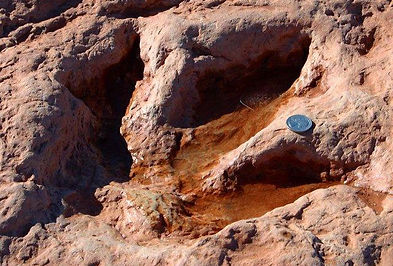
Types of Fossils
There are many different types of fossils. Some are records of things left behind by the animal. Some are impressions of an animal. Finally, other fossils are actual animal remains from thousands of years ago.

True Form Fossils
This type of fossil used to be a living animal. Most often, it is only the hard portions of the animal that become fossils. This could be animal skeleton, teeth, claws, or even eggs. For insects and shellfish, a shell may become a fossil. Over many years, the orginal material making up the animal part is replaced by minerals. This process is called "fossilization."
Dinosaur Skeleton Fossil Museum
http://www.pdpics.com/photo/1153-dinosaur-skeleton-fossil-museum/

Mold Fossil/Cast Fossil
These two types fossils are impressions left behind by animal parts:
Mold Fossils- these are made when the part of an animal leaves an impression in rock. Layers of minerals cover a part of an animal. Instead fossilizing, the remains dissolve. All that is left is the shape of the remains (Think of mark you might make if you made a handprint in clay).
Cast Fossils- these are the fossils that are create when dirt and minerals fill a mold fossil (Think of making homemade chocolate. Chocolate is poured into a mold, and when it cools it hold the shape of the mold).

Mold Fossil
Gravicalymene: Mold and Cast Fossil (2011) Robert Weller, Cochise College and the Exhibit Museum of Natural History
Cast Fossil Shell Fossils by Petr Kratochvil

Trace Fossil
Trace fossils are not animal fossils. They are actually fossils that show animal activity. These include fossilized animal nests or footprints. This type of fossil is important because it teaches us about how animals lived many, many years ago.